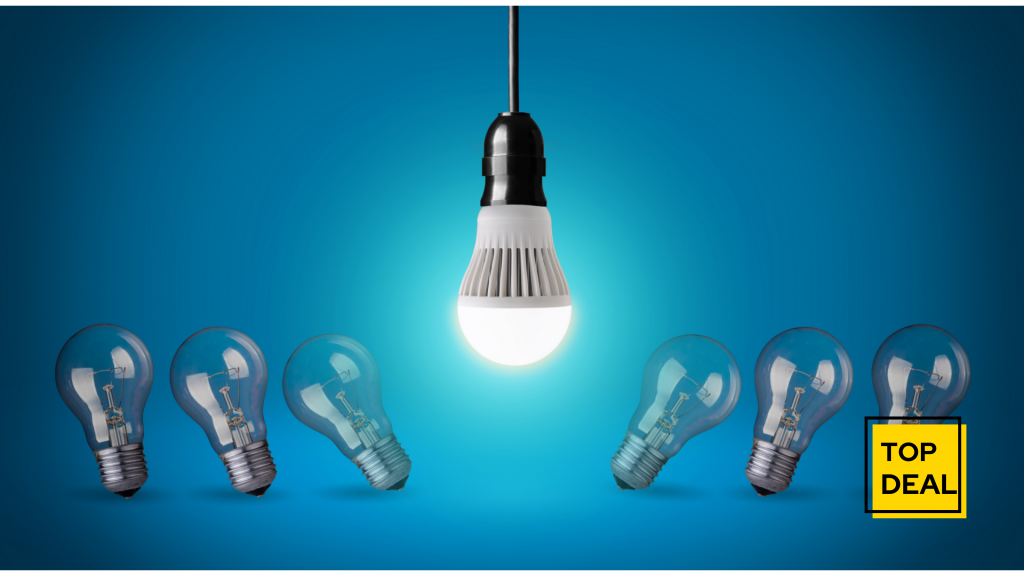
Traditional Lights or Smart Home Lights: Which is Better?
The smart home is the latest trend in the market as it has many benefits as well as technology. In order to have a smart home, one must have a smart light bulb that can be controlled from anywhere with an internet connection.
Table of Contents
What Are Smart Home Lights?

Smart lights use LED bulbs which are energy efficient and last longer compared to traditional incandescent bulbs. Several companies now provide dimmable or tunable white light equivalent to a 60-watt incandescent bulb at only 9 watts of power with additional benefits such as being able to connect them to smartphones via Wi-Fi and manage their lighting right from their phone. Other features include scheduling them on/off automatically or based on mood, setting up different color tones of lights (e.g. bright blue for parties and soft yellow for reading), and saving energy bills by turning them off when not needed.
Advantages Of Smart Home Lights
There are several advantages of smart lighting, including:
- Saving money on electric bills as these lights only use 9 watts of power which is equivalent to a 60-watt traditional bulb and can be scheduled automatic on/off times,
- Controlling them from anywhere through a smartphone via Wi-Fi without having to replace existing light fixtures or another installation cost for normal light bulbs,
- Have different color tones available such as bright blue for parties and soft yellow for reading
- Consuming less space than regular lamps and other bulky lighting setups, and
- Not getting stressed out by changing regular lightbulbs that might burn out easily or purchasing the wrong type of lampshade that does not fit your decor.
Disadvantages Of Smart Home Lights

Few disadvantages include:
- Relatively expensive as compared to regular light bulbs, and
- Lower quality due to higher flicker rate of LED lights compared to regular incandescent bulbs which have a flicker-free motion.
- Even though smart lights can be controlled from anywhere through Wi-Fi, it consumes data which might result in additional fees if the user goes over their monthly allowance.
- Another disadvantage is that if your internet connection or smartphone gets disconnected, you cannot control them from anywhere until you get connected again.
- Smart light bulbs are not designed for outdoor use as they are made with highly sensitive technology which makes them prone to water and corrosion when exposed to weather conditions
Traditional Lights

Traditional light bulbs do not have these features since they use halogen, incandescent, or CFL technology which can be a big inconvenience in a smart home. In addition, they do not last long and burn out quickly after only a year of usage whereas smart LED bulbs can last longer in theory.
Another disadvantage of traditional light bulbs is that they use up a lot of energy, which can increase your electric bill by more than 90% compared to smart lights. They are also less efficient since they cannot be programmed or scheduled on/off times automatically.
The most popular traditional light bulb brands are incandescent, halogen, and CFL technology where incandescent is said to last the longest but uses up the most electricity whereas CFL stays cool even after hours compared to other types of traditional lighting. Halogen is not as popular today due to its poor quality materials causing it to break easily although it has improved over time with better heat management technologies.
The biggest advantage to traditional lights is that they can be taken outdoors, used for floodlights, and lighting up dark areas. They also emit a much more pleasant color and give a unique cozy feeling that led light has a hard time imitating.
Traditional Light Bulbs vs Smart Home Lights

It comes down to preference where some people prefer smart home technology over traditional lights while others are not comfortable with LED bulbs due to frequent flickers especially if the light is used for reading where it might cause eye strain. Others also say that these LEDs are unnatural since most of them simulate incandescent light by adding bluish tints into their white color spectrum, which makes them less appealing compared to traditional incandescent bulbs.
However, smart homes have become more popular today since these lights bring convenience in controlling the lighting through smartphones without having to replace existing light fixtures or adding wiring throughout your house. These smart lights are also more energy-efficient than other types of lamps and lighting devices due to using LED technology.
Conclusion
Smart home lights are beneficial if you plan on getting rid of your current traditional lighting setup due to their energy efficiency and longer lifespan compared to regular lamps. If you love the cozy feeling that traditional light bulbs give, then it is recommended not to purchase smart home lights since they might not give you the same ambiance.
Regardless of which one you choose, it is best to mix both types of lighting together in order to bring comfort into your home while saving money at the same time.

